Contents
- Viking Age Hairstyles & Beards: Historical & Modern Takes
- Historically Accurate Viking Age Hairstyles for Men
- How Did Viking Men Wear Their Hair?
- Did Vikings Have Dreadlocks?
- Did Vikings Have Man Buns?
- Historically Accurate Viking Age Hair Styles for Women
- What We Know About Viking Beards: Accurate Viking Beard Styles
- Historical & Archeological Examples of Viking Beard Styles
- How Common were Viking Beards?
- Why Did Norsemen Grow Beards?
- Did Vikings Braid Their Beard?
- Modern Viking-inspired Haircuts: Do’s & Dont’s
- Don’t: The Ragnar and Uthred Haircut
- Do: The Northman Haircuts
- Do: The Young Björn Ironside, the Rollo, and the Osferth Haircuts
- Viking Hair Styles
Viking Hair Styles
Sviatoslav’s shaved head and side knot described in this passage support the premise that Vikings used razors, tweezers, and/or other means to mold their hair to however they wanted.
Viking Age Hairstyles & Beards: Historical & Modern Takes
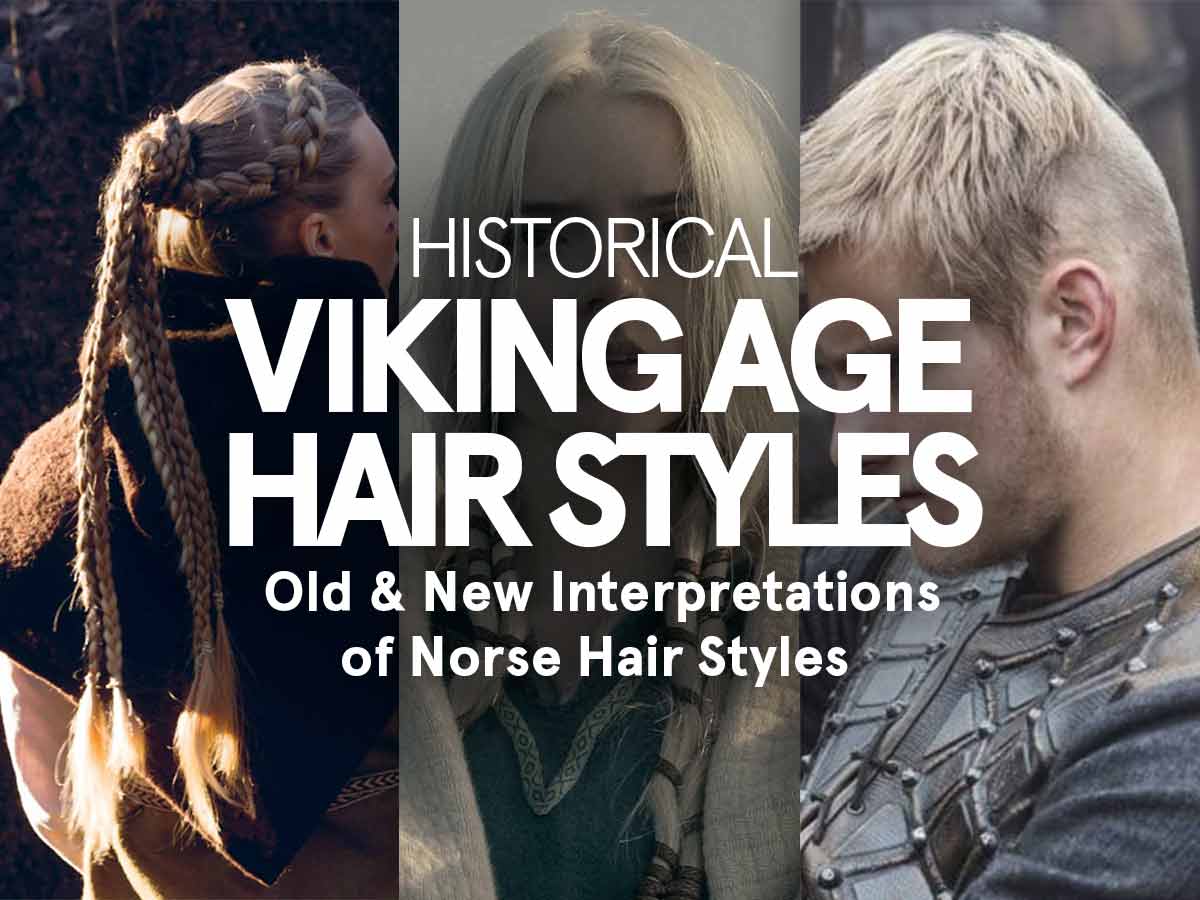
You might’ve seen some very cool Norse hairstyles in one of the many Viking-inspired TV shows or movies lately, and thought to yourself “are those elaborate picture-perfect haircuts really historically accurate?”. Well, in many cases not at all. But, it turns out there are some accurate depictions out there too, so there is definitely hope if you’d like to find (or create) a historically accurate Viking hairstyle in modern times.
I’ll walk you through the evidence we have found so far that describes hairstyles from Viking Age Scandinavia, and listed some modern interpretations that follow these fairly well.
Hopefully, I’ll help you sort out the authentic and tasteful hairstyles, from those where artists and creators have taken very generous liberties in their artistic interpretation of the few sources we have available.
- Historically Accurate Viking Age Hairstyles for Men
- How Did Viking Men Wear Their Hair?
- Did Vikings Shave Their Heads?
- Did Vikings Have Dreadlocks?
- Did Vikings Have Man Buns?
- Historical & Archeological Examples of Viking Beard Styles
- How Common were Viking Beards?
- Why Did Norsemen Grow Beards?
- Did Vikings Braid Their Beard?
- Don’t: The Ragnar and Uthred Haircut
- Do: The Northman Haircuts
- Do: The Young Björn Ironside, the Rollo, and the Osferth Haircuts
Let’s dive in and look at what types of Viking hairstyles we know of from archeological findings and historical texts.
Historically Accurate Viking Age Hairstyles for Men
How Did Viking Men Wear Their Hair?
Here are some historically accurate Viking male hairstyles found in archeological evidence and described in historical accounts from the time period:
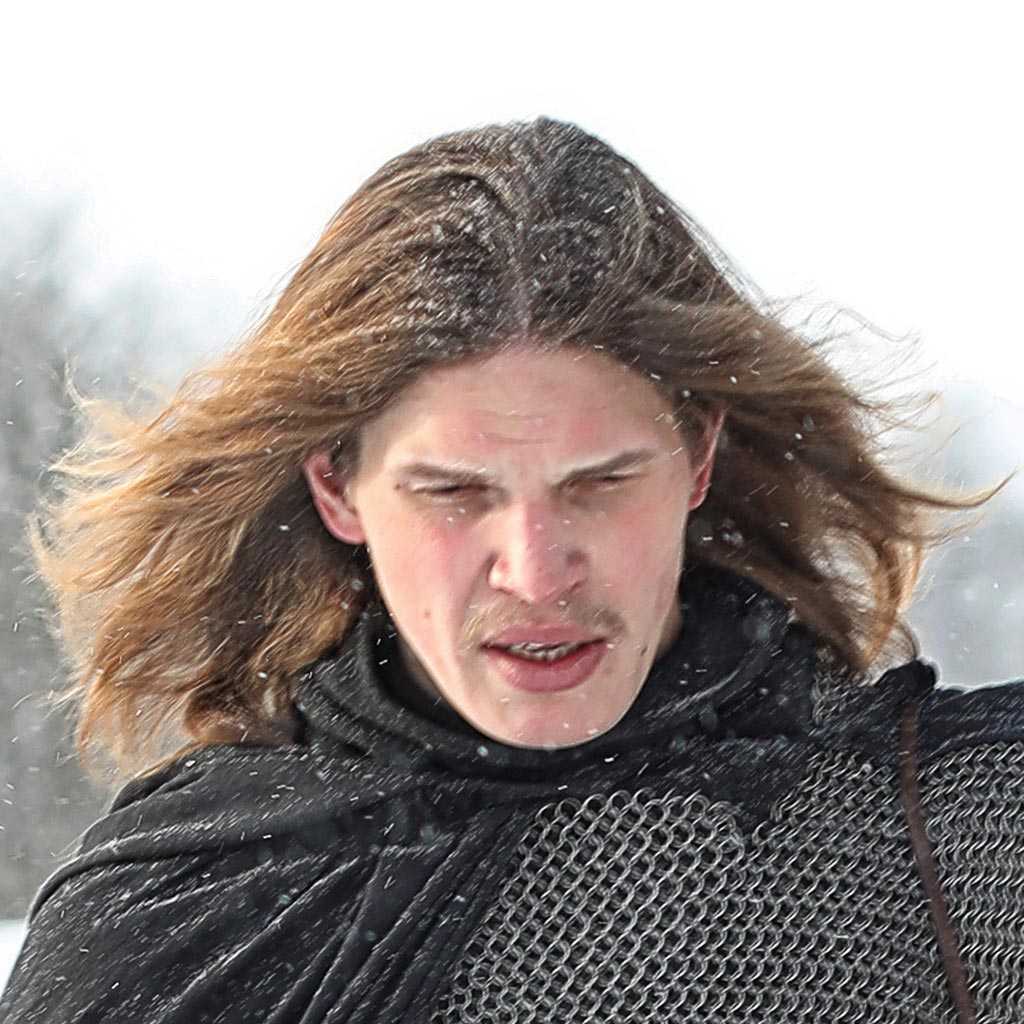
Flowing off the sides or tied in knots
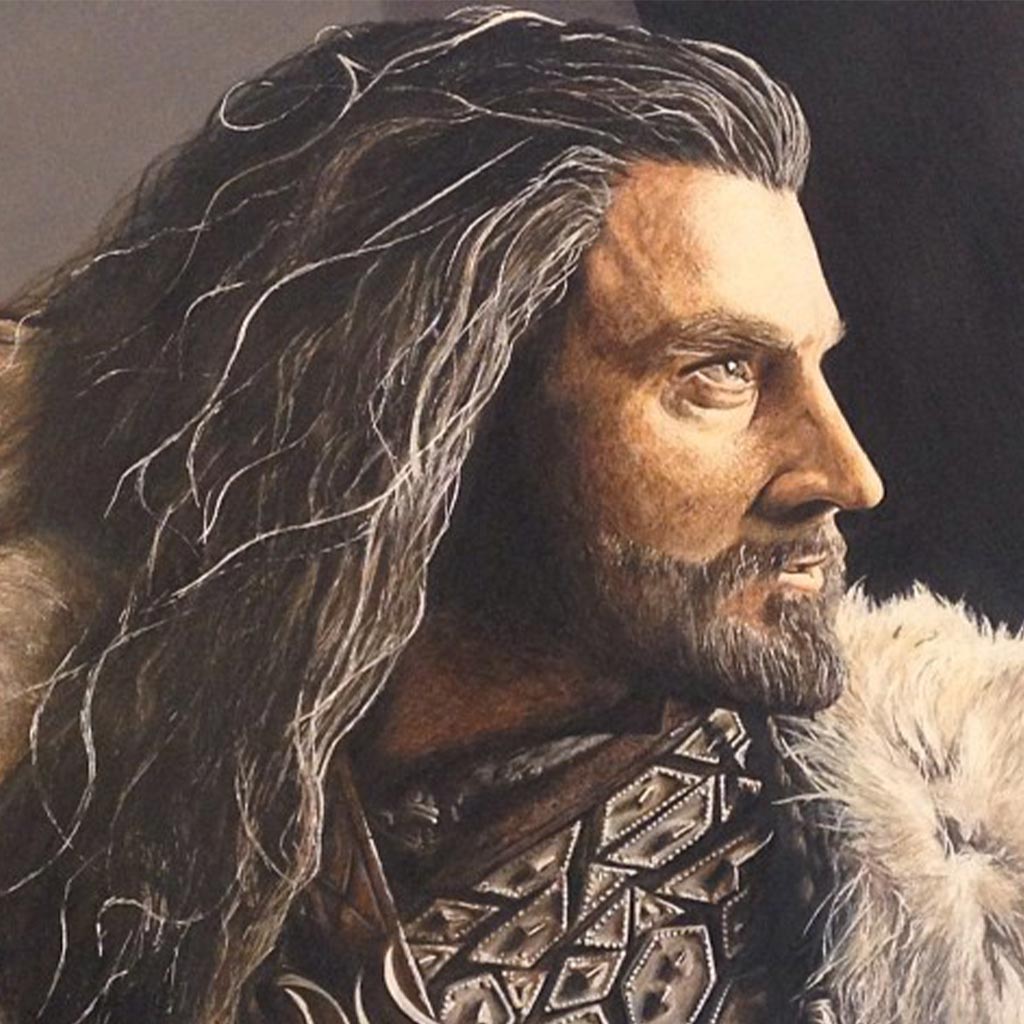
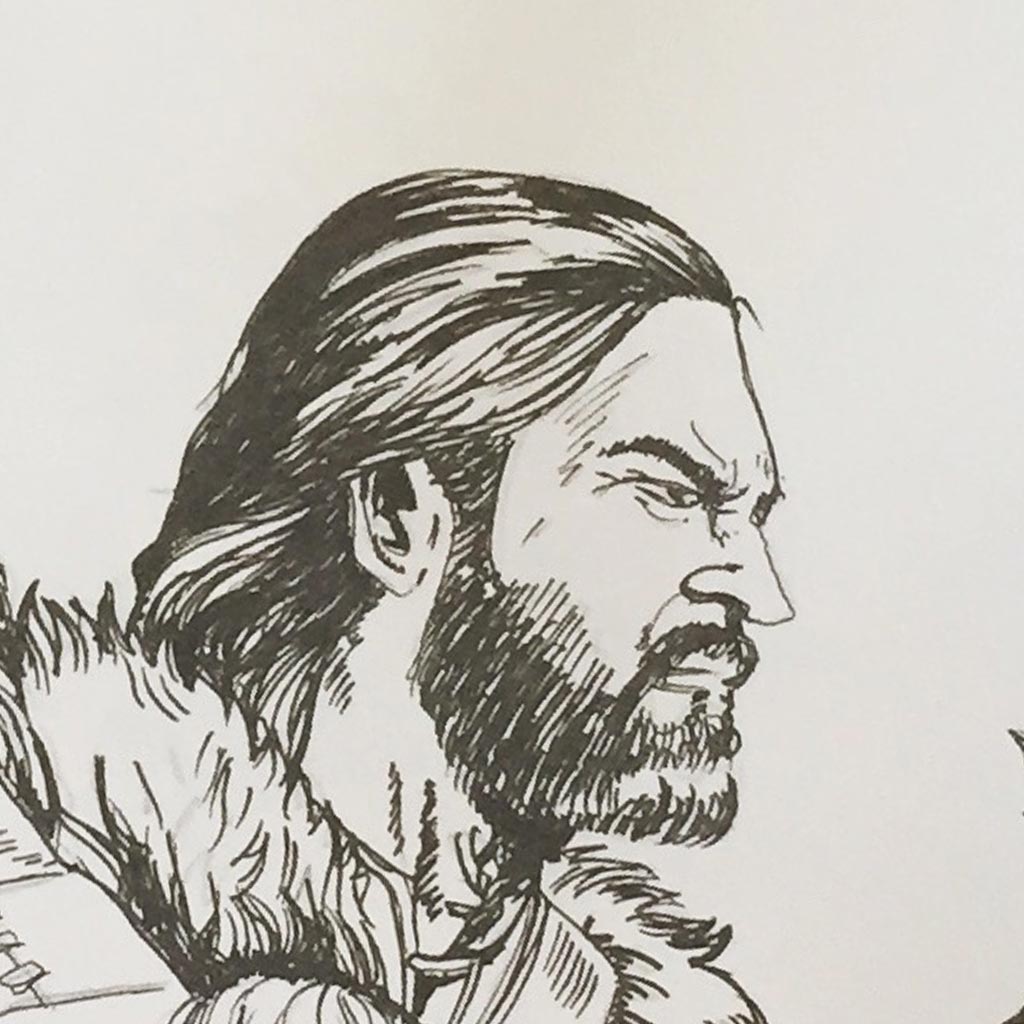
Long hair tied in a knot or braided behind the back
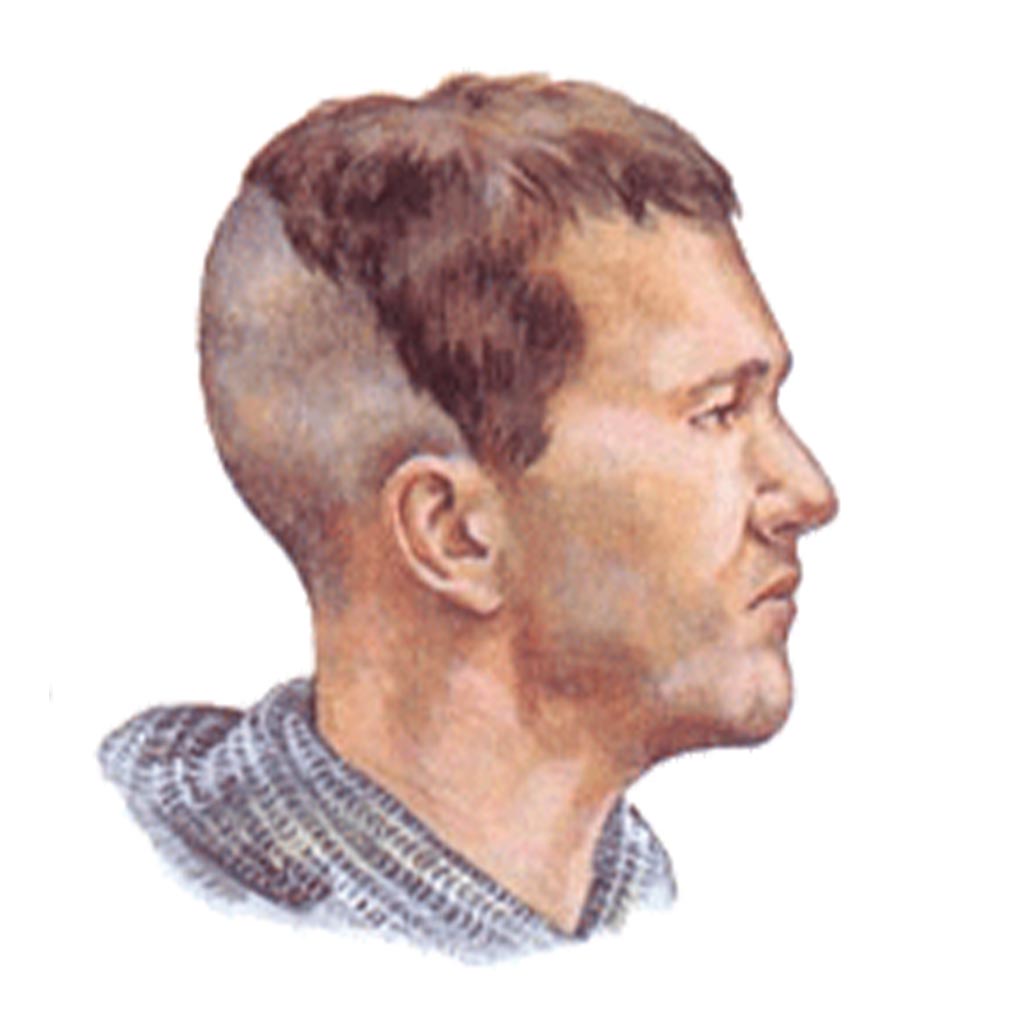
Shaved back and longer hair in front
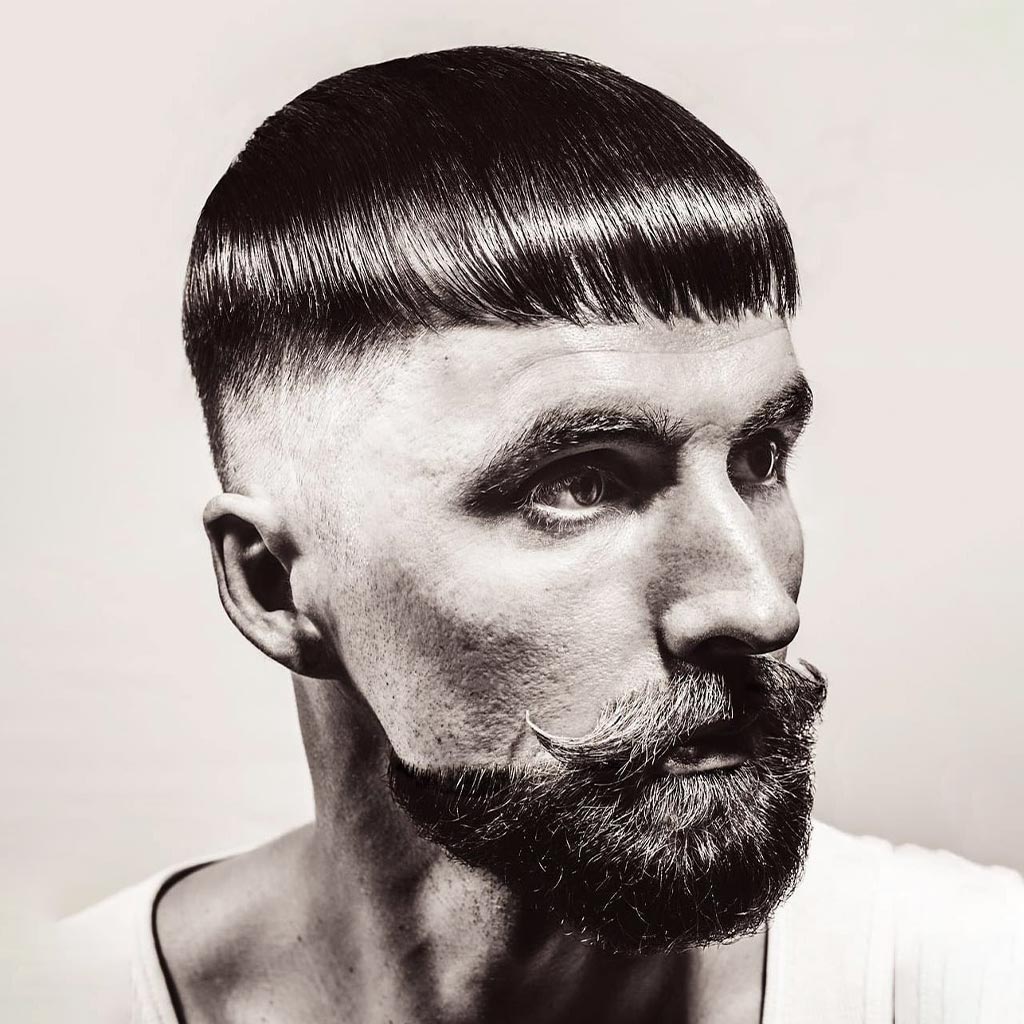
Shaved sides and back, with high bowl cut
These Norse hairstyles can be seen in archeological findings that have been dated from the Viking age, in the form of jewelry, sculptures, and other artifacts, as well as in historical accounts such as texts, letters, and inscriptions.
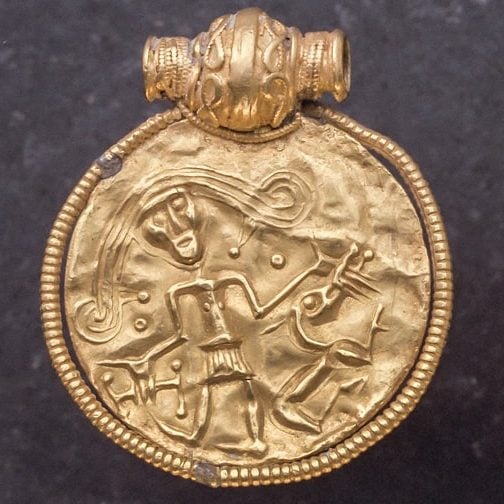
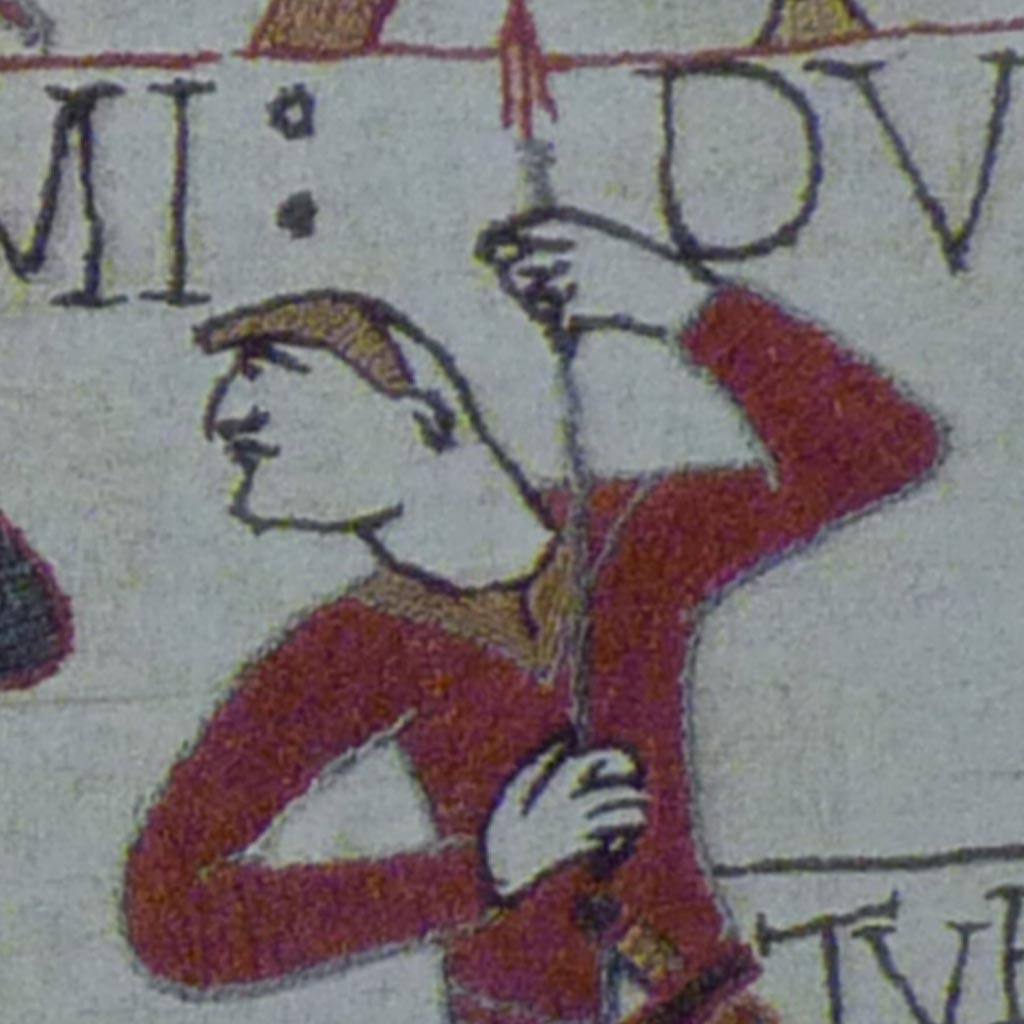
Viking sculptures and engravings have been found with generally long hair and beard that was usually shaped, tied or braided in different ways in order to not be in the way (while in combat or working).
There is a general belief among Norse historians that Vikings and Germanic people in general assigned special powers to long hair and beards, with the Suebi knot and Merovingian kings being two good Germanic examples where longer hair presented in a certain way was believed to have an effect on strength and power.

A few notable exceptions have been found on the Oseberg cart from around 800 CE, where shorter haircuts with shaved sides and backs are clearly engraved multiple times, though there are plenty of long-haired examples as well.
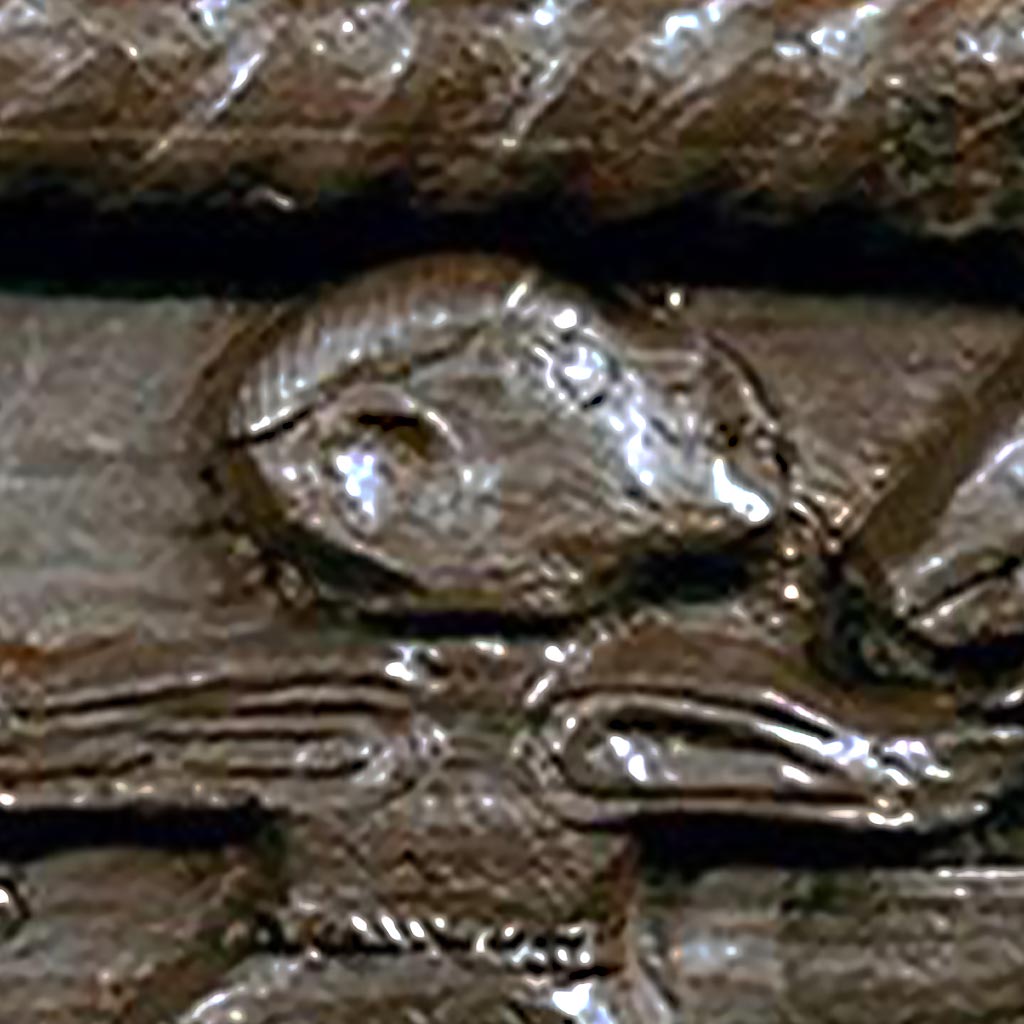

One of the few written accounts we have on specific Viking hairstyles is an Old English text where an Anglo-Saxon man is angry at his brother for adopting a heathen haircut and forgetting his own customs. He wears his hair “balded neck and blinded eyes”, which suggests the so-called “Norman Cut” with long hair in the front and shaved in the back.
What is interesting here is that this particular hairstyle was so associated with the Vikings/Normans that this English man felt shame that his brothers would wear his hair like that.
For more information on what we actually know about Viking hairstyles, I’d recommend listening to Dr. Jackson Crawford who specializes in Old Norse (he teaches Scandinavian Studies at my Alma Mater UC Berkeley, on top of talking about Norse mythology on YouTube):

 Historically accurate Viking male haircuts with shaved sides and sharp contours forming a high and short bowl cut (found on the Oseberg cart built around 800 CE).
Historically accurate Viking male haircuts with shaved sides and sharp contours forming a high and short bowl cut (found on the Oseberg cart built around 800 CE).Did Vikings Have Dreadlocks?
It might be a cool notion to imagine dreadlocked Vikings, but there is simply no definitive evidence that dreadlocks were common or even present at all among Norsemen during the Viking Age. On the other hand, we do have documented as well as archeological proof of Vikings being very strict about combing their hair regularly, which—assuming this was the norm among the whole population—would effectively negate any presence of dreadlocks.
Still, there are some sources suggesting that there may have been dreadlocks present in the Norse culture, but there is no archaeological evidence to support this claim. The most compelling evidence for this claim comes from images in Norse mythology which show characters with long, matted hair.
Every morning a girl servant brings a great basin of water; she offers this to her master and he washes his hands and face and his hair — he washes it and combs it out with a comb in the water
Ibn Fadlan, on the Rus merchants at Itil, 922
However, no scholars have been able to definitively determine if these images depict dreadlocks or simply long, unkempt hair. Therefore, the claim that Vikings had dreadlocks is largely unsubstantiated as far as I’m concerned.

That said, as dreadlocks have been found to be present in other cultures around the Viking Age, such as the Polish plait (a singular “lucky dreadlock”) of Poles and other Slavs, it is possible that some Vikings from Slavic areas or nearby Viking areas of influence such as Jomsborg, Volin, Volgian Rus, or Truso would wear this “lucky charm” dreadlock.
Did Vikings Have Man Buns?
As Vikings tended to have longer hair, it is certainly possible that some of them may have tied their hair up in a bun (what we today would call a “man bun”) to keep it out of their eyes and face. We just don’t have any evidence to support this theory, though we do have evidence that suggests that they tied their hair further down along their neck so that it would fall on their back instead of their face.
So although it is a possibility, there is no evidence available to us that would suggest that Vikings donned a man bun.
Historically Accurate Viking Age Hair Styles for Women
We do not have as many archeological findings of different female hairstyles as we have for male cuts, but nonetheless here are some that are fairly historically accurate:

Long hair parted in the middle and tied back in a knot or braid



These hairstyles come from artifacts, sculptures, engravings and similar left behind in Norse graves, so they are likely to have been at least somewhat popular during the Viking Age.


The Valkyrie knot is the most commonly depicted hairstyle, as the Valkyries are the most commonly depicted Viking females in general.
In Norse mythology, the valkyries were responsible for bringing half the warriors who have fallen in battle to Valhalla, while the other half go to another famous Viking female figure; Freya, the goddess of fertility, love, beauty, and war.
If you’d like to try your hand at making your own valkyrie knot, here’s a detailed video with instructions:

Related Reading

Is there a link between Scandinavians, Vikings, and the Germanic people who migrated across Europe during the fall of the Roman Empire? I plowed through numerous books and historical texts to map out exactly how the Germanic people are connected to the Norse people and modern-day Scandinavians.
What We Know About Viking Beards: Accurate Viking Beard Styles
Vikings were often described and depicted with well-groomed and sometimes elaborate facial hair, ranging from full and long beards to more practical Viking-style mutton chops and mustaches. Historians believe that most Norse men had facial hair, and those who didn’t were even mocked for it according to the sagas.
The Viking beard was also a source of pride, and if someone insulted another man’s beard that was grounds for killing the other man according to the sagas.
Historical & Archeological Examples of Viking Beard Styles
Despite all the modern-day depictions of elaborate Viking beards, we don’t really have too many sources that show how Viking beards actually looked like and how they were styled.
Here are some examples of historically accurate Viking beard styles that have been found on figures and runestones, and dated back to Viking age Scandinavia:





Related Reading

Believe it or not, the Thor from Norse mythology is not quite the handsome, chiseled, blond, and time-traveling hunk you’ve seen in the MCU movies. In Norse mythology, the thunder god is primarily described as a red-haired, pot-bellied, temperamental, and fiercely strong warrior, who loves to knock down vast quantities of mead and even known to dress up as a lady (!) in order to trick the giants to give back his lost hammer. Read Article Now






How Common were Viking Beards?
Beards and mustaches were very common in Vikings according to archeological findings and written records. The Viking beard was a source of pride and honor among the free men, and insulting one’s beard could result in a deadly outcome or sometimes even prolonged feuding between families.
Furthermore, recent DNA studies show that people from modern-day Scandinavia have a specific gene-makeup that is linked to more facial hair growth than average, as well as a facial hair growth pattern that is concentrated around the upper lip, cheek, neck, and chin (meaning full beards are common among Scandinavians).
This is assuming Viking Age Scandinavians had a similar genetical makeup for certain markers related to beard growth, which the same study supports, mentioning that Vikings largely had similar genetic markers as modern-day Scandis when it comes to hair growth.

Why Did Norsemen Grow Beards?
According to the Norse sagas, Viking Age Scandinavian men were proud of their beards, and facial hair in archeological findings see a sudden increase during the Viking age (compared to the bronze age), suggesting there was a strong cultural preference for beards.
Njal’s Saga, for example, explains how Norsemen were expected to grow a beard, and those who didn’t were often mocked by both their peers and potential partners.

Did Vikings Braid Their Beard?
Vikings were known to braid their beards in different ways according to written primary sources, among them the stories about Svein Tveskägg (Sven Forkbeard), known for his beard that was split into two braids.
Scholars believe his grave has been found underneath a church in Lund, Sweden, in what is called the Drotten church ruins. There is even a bearded stone figure from the ruins, although it is unclear if it’s supposed to depict Sven himself or someone else.

I’d guess that it likely isn’t Sven Forkbeard since it doesn’t have his signature “forkbeard” (i.e. parted or braided beard).
Modern Viking-inspired Haircuts: Do’s & Dont’s
Are you perhaps in the market for an authentic Viking haircut, or would just like to generally style your hair as the Norse people (supposedly) did? Let’s go through some do’s and don’t’s if you want to keep it fairly historical.
Don’t: The Ragnar and Uthred Haircut
First off, let’s get some things out of the way straight off the bat. It’s important to note that there is no evidence of the braided undercut style we see so much in TV shows (i.e. Ragnar & Uthred), but it is of course possible that some Vikings styled their hair like that.


Vikings have after all been documented to take good care of their hair and appearance in general, and since there are some similar haircuts where the sides and back are shaved, it’s not out of the realm of possibilities.
That particular haircut has just never been described or documented in any way as far as we know.
Related Reading

Curious how The Last Kingdom compares to Vikings, and how they both compare to Game of Thrones? I’ve compared them thoroughly in different categories and analyzed what online critics on IMDb and other sites think, in order to answer which show is the best of the three. Check it out if you’re curious! Read more about how The Last Kingdom, Vikings, and Game of Thrones compare
Do: The Northman Haircuts
That said, there are modern takes on Norse hairstyles that I prefer over the Vikings ones, especially those in Robert Egger’s The Northman:






 Photo credit: Aidan Monaghan/Focus Features
Photo credit: Aidan Monaghan/Focus FeaturesI think Robert Eggers did a fantastic job with the costumes and hairstyles, and his zero tolerance for taking shortcuts really does show in the details.
Some examples include insisting that any hairbands were made of tablet weaving, and the choice of Heimr the Fool’s haircut to match that of Leo the Deacon’s description of a Norse haircut fairly accurately:
He shaved his head completely, except for a lock of hair that hung down on both sides
An approximate translation of Leo the Deacon’s History (p. 167—168)
Eggers and his team used hairstyle examples found on Viking-age objects and artworks, such as the ones I listed earlier in the article.
Another modern interpretation I like is that of Annette Collin, who wrote the book The Shield Maiden & the Viking: Step-by-step guide for modern Viking braids & make-up, within which she displays and guides you through tons of different ways to braid female and male hair (& beards) in a Norse-inspired way.





 Photo credit: Annette Collin
Photo credit: Annette Collin Many of these hairstyles are based on archeological findings, including the famous valkyrie knot. In some styles, Annette has infused a lot of her own creativity (due to a lack of more diverse sources I’d assume), but this has been done in a very tasteful and authentic way.
Do: The Young Björn Ironside, the Rollo, and the Osferth Haircuts
And finally, there are some haircuts from Vikings and The Last Kingdom that are fairly accurate for the time period, so let’s not throw them under the bus completely:



Sources:
Viking Hair Styles


Vikings came from an honor culture where individuals expressed their worth through actions, words, and appearance. Abundant jewelry, clothing, combs, and personal care items recovered by archaeologists show that personal presentation was of great importance in Viking societies. But while the Viking preoccupation with hair and grooming are well established, what their hair styles actually looked like is a surprisingly controversial topic. Since Vikings only left cremated or skeletal remains, and since the written material from the era is almost always sparse in detail, how can we really know what Vikings looked like? This article will examine the surviving evidence from the literary and archaeological record to render a more accurate portrait of the Viking hairstyles of 1000 years ago. And as we will cover below, these various accounts range from short hair to long hair, beardless to bearded, full head of hair to partially shaved heads.
The Viking Age (793-1066; or 750-1050, if you like the less Anglo-centric numbers) lasted around 300 years. Vikings traveled through what are now 40 different countries and interacted with 50 world cultures. At the apex of their influence, Vikings could be found from Newfoundland to Western Asia. Their trade networks were extensive, with goods and ideas passing between intrepid travelers over vast distances. There is strong historical and archaeological evidence that Vikings absorbed fashion and other material and intellectual properties from the peoples they interacted with and spread them to new peoples. Because of the Vikings, fashion trends from the east were felt in the west, and vice versa.
Because of this, when one speaks of “Viking hair style” it is foolish to think that this is a narrow spectrum of styles that never changed. To think that Vikings only had short hair or long hair, bowl cuts or “reverse mullets,” full beards or just mustaches or were clean shaven would all be a drastic oversimplification. Similarly, it is not on the side of accuracy to say “Vikings never had that hair style” when hundreds of thousands of Vikings lived over 10-15 generations throughout an immense spread around the world. Vikings were a varied and curious people who did not like to be limited.
Women’s Hair
In Viking society, women wore their hair long as a sign of status and to be appreciated for its beauty. Naturally, these hard-working women tied their hair back, braided it, or wore it up to keep it out of their way while they worked the loom or performed their other daily tasks. Sculptures, carvings, and other art show women wearing their hair long in the back, while the long locks of the front and sides are worn up in a bun or braided in a knot.
Below is a reproduction pictured next to to the original Viking artifact depicting women’s hairstyles during that time:

And below is a 9th century artifact found in Revninge, Denmark which appears to show a woman with long hair knotted or in a bun at the back of the head.

And below is yet another Viking age artifact which appears to be a Valkyrie holding a drinking horn, with her hair in a bun:

The Eddic poem Rigsthula mentions both jarl (upper class) and karl (the land-owning “middle class” that made up most Vikings) women wearing head dresses or bonnets. In the Oxford translation, the karl woman’s head dress is referred to as a “curved cap.” Such bonnets have survived in archaeology. This “curved” style is called a Jorvik (York) cap, while a simpler, more angular style is known as a Dublin cap. These caps or head dresses were commonly made of linen, with wool perhaps being used in the colder months.
Then as now, richer women had nicer hats. Here, a pair of archaeological discoveries speak a thousand words: a finely made woman’s cap from Viking Age York and another from Lincoln (about 55 miles apart in the Viking occupied Danelaw of England) were produced from the same bolt of silk. This bolt of silk had come all the way from the Far East, changing hands from one Viking to another across the river systems of Europe. This is a testament both to the Vikings’ far-reaching trade networks, and the importance they placed on fashion.
Proud as Viking women were of their locks, it was Viking men that were the most preoccupied with hair. Here we see a wide range of hair styles and beard grooming, as men tried to set themselves apart from each other and boast their status and worth.
Did Viking Men have Long Hair or Short?
Numerous Roman writers comment on the long hair of “Northern barbarians,” but did the Vikings still wear their hair long like their ancestors (and the neighbors of their ancestors) did? In the Grágás medieval law codes of Iceland, there is the rule that women should not wear their hair short “like a man’s,” but “short” and “long” are always relative terms. In many ways, short hair is more practical for men on the move – one of the main reasons why most armed forces today insist on short hair. So, for insight into the question of Viking men’s hair length, we must rely on the artistic record.
Below is a period artifact showing a Viking warrior with long hair and a possible pointed goatee:

In the carvings and other art of the Vikings, or the art of others portraying them, we see a range of hair lengths. An easy illustration of this is in the Isle of Lewis chess pieces, where we see the king with long plaited hair, the warriors have shoulder length straight hair, and the bishop only wears his hair to the nape of his neck.
Another illustration is the carving found on a wooden wagon that was part of the Oseberg ship burial. This particular scene shows men in battle – one apparently with short hair on top of his head but not on the sides or back. While some may argue this might represent a wool cap he was wearing, there are similar hair styles found on the Bayeux Tapestry.

The 11th century color plaits by English artists portraying the Great Heathen Army of two centuries before show most Vikings having short hair. The artists could not have known what the Vikings of the late 9th century had looked like (except from oral tradition, now lost) but would have been acquainted with Vikings of their own day. Again, notice the range of bearded and non-bearded faces.

The 230 foot long Bayeux Tapestry (small portion seen below), was reportedly woven by Matilda, the wife of William the Conqueror and her ladies to commemorate the dramatic events of 1066 show a number of Vikings. This amazing artifact is believed to be from the 11th century, made just a few years after the famous battle of Hastings. In this particular account, most of the Vikings are shown with short hair, various hair colors and some possibly having the back of their heads shaved (note the second man from the right).

So, once more, the picture that emerges is one of considerable variety in hair length and style. But in almost every case, there is the predisposition towards grooming and deliberate personal presentation, whether that hair be long or short.
Shaved and Partially Shaved Heads?
One of the rare written accounts of Viking hair styles comes from a surviving letter from one Englishman to his brother, upbraiding him for his adoption of Viking clothing and hair. “You dress yourself in the Danish fashion, with bald neck and blinded eyes.” This “bald neck and blinded eyes” is taken by many to mean a hairstyle where the back is shaved but the top is long (perhaps even with long bangs).
Below is History Channel’s series Vikings attempts to recreate this Danish style:

Speculation aside, such a haircut appears both in the Oseberg Ship Burial and the Bayeux Tapestry. In the previously mentioned relief on the Oseberg Ship and in the scene below from the Bayeux Tapestry, we see a similar hair style.

But there is more. In the account of the treaty signing between the Byzantine Empire and the Viking Rus (of Kiev), Leo the Deacon describes the notorious Sviatoslav (Norse name, Sveinald and Grand Prince of the Rus) as having “shaved his head completely, except for a lock of hair on one side, denoting his rank.” This hairstyle sounds similar to what we see above, as well as a bit like the “Suebian knot” described by Roman writers of long before.
Among the Suebi, even till the hair is grey, the rough locks are twisted backward, and often knotted on the very crown: the chieftains wear theirs somewhat more ornamentally.
Sviatoslav’s shaved head and side knot described in this passage support the premise that Vikings used razors, tweezers, and/or other means to mold their hair to however they wanted.
Below is a 19th century sculpture of Sviatoslav the Brave, based on the description by Leo the Deacon:

Did Viking Men Dye their Hair?
Some Viking soaps had a very high lye content. These soaps could bleach the hair and beard a platinum blonde (as well as annihilate any lice that might try their luck). Many experts are convinced that Vikings deliberately dyed their hair to achieve this desirable look (as well as conceal their age if they were lucky enough to live so long). However, since sources mention Vikings with other hair colors, such as red, brown, or black, it is safe to say that this practice was neither universal nor accidental.
Irish sources speak of competing groups of Vikings that fought it out for supremacy during the middle of the 9th century. These “Fair (or Light) Foreigners” and “Dark Foreigners” are usually thought to be Vikings from Norway and Denmark, respectively – though there are many other theories. Since Norwegian Vikings were not uniformly blonde any more than Danish Vikings were uniformly brown, the name could have arisen from one group’s prevalence of blondes and bleach-blondes juxtaposed to the other group’s natural coloring. Of course, there are many other possibilities, and it is impossible to know.
Beards
Few things seem more synonymous with Vikings than beards! Of course, Vikings loved beards and were even known individually for their beards (such as Sygtrygg Silkenbeard and Sweyn Forkbeard). One of the kennings (poetic nicknames) for Thor was “Red Beard.” But not all Vikings grew their beards au naturel. In fact – some Vikings had no beards at all.
In one of the most popular Icelandic sagas (then and now), Njal’s Saga, the wise hero is slandered by his enemies for having no beard (with the insinuation that this casts doubt on his gender and sexuality). However, beardless Vikings are plentiful in both Norse and non-Norse art.
Vikings who had beards groomed them carefully. In the Eddic poem, Rigsthula, we read of the free-born landowner (the class that produced the most Vikings) “his beard was trimmed.” Similarly, in art we see beards trimmed and shaped. Sometimes we see goatees or even mustaches with no beard. It would appear that Vikings used as much freedom of expression in cultivating and grooming their facial hair as they did in everything else.
A figure from the Oseberg Ship Burial showing a figure with well-groomed hair, mustache, and beard:

Conclusion
As we have seen from the (very limited) written accounts and the few period artifacts we have to pull from, Viking hair styles varied from short hair to long braided hair, and sometimes included shaved on the side and possibly even bangs over their eyes. With nearly 300 years of Viking age history, including literally hundreds of thousands of Vikings who were each influenced by the dozens and dozens of different cultures they eventually blended with, it is impossible to say there was only one or two specific Viking hair styles. Enthusiasts who say that a particular hairstyle was never worn by the Vikings are overconfident considering the few available facts. Or they are letting the artistic liberties of popular Viking TV series or movies frustrate them too much.
We do know for certain, though, that Vikings were very deliberate with their appearance and quite proud of how they looked. Shortly after the Viking Age was kicked off with the infamous raid of Lindisfarne, the Anglo-Saxon bishop, Alcuin, included in his scathing letter to King Aethelred I of Northumbria:
“Look at the dress, the hairstyle, and the luxurious habits of the princes and people. Look at the hairstyle, how you have wished to imitate the pagans [Vikings] in their beards and hair! Does not the terror threaten of those whose hairstyle you wished to have?” (Price, 2020, p. 282).
Not only were the Vikings well-groomed and distinctive in appearance, but they were also known by this. Indeed, these qualities were admired (sometimes grudgingly) by the people they came in contact with. Of course, this was all part of the point. Appearance shows self-respect and conveys self-concept. The Vikings had these things in spades. It was part of who they were, and part of what made them so successful.

About Sons of Vikings
Sons of Vikings is an online store offering hundreds of Viking inspired items, including Viking jewelry , Viking clothing , home decor items and more .
To learn more about Viking history, we recommend our 400+ page, self titled book that is available here .
References
- Rodgers, D. & Noer, K. Sons of Vikings: History, Legends, and Impact of the Viking Age. KDP. The United States. 2018.
- Price, N. Children of Ash and Elm: A History of the Vikings. Basic Books, New York, 2020.
- The Poetic Edda. Larrington, C. (translator). Oxford University Press. Oxford. 1996, 2014.
- Frankopan, P. The Silk Roads: A New History of the World. Penguin Random House. New York. 2015.
- The Russian Primary Chronicle: The Laurentian Text. Translated by S. H. Cross & O. Sherbowitz-Wetzor. Medieval Academy of America. Cambridge, MA. 1953. https://www.mgh-bibliothek.de/dokumente/a/a011458.pdf
- Short, W. R. Health, Grooming, and Medicine in the Viking Age. Hurstwic. 2021. Hurstwic: Health and Medicine in the Viking Age
- Dees, C. The Truth About Viking Hairstyles: What Did They Really Look Like. Norse Tradesman. 2021. The Truth About Viking Hairstyles! What Did they Really Look Like? (norsetradesman.com)
- Thompson, A. Anglo-Saxon and Viking Men’s Hairstyles. Thegns of Mercia. 2019. http://thethegns.blogspot.com/2019/10/mens-hairstyles.html
- Ward, C. Viking Age Hairstyles, Haircare, and Personal Grooming. Viking Answers Lady. 2021. http://www.vikinganswerlady.com/hairstyl.shtml
Picture Credits
